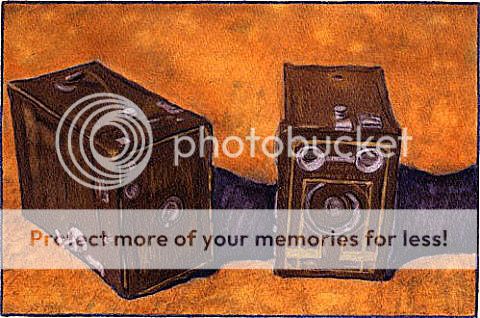Terri, can you explain how you size the prints with knox gelatin? Do you dilute the gelatin? I am having a hard time with this. I have marshall oils, but I can't seem to find a paper that will take the oils well. They either blotch up or wipe off completely. Thank you.
Hi mainiac4775 - welcome to TPF! I feel your pain - I've had to throw away many a good inkjet print when the oils did that to me in the past. Most of them are manufactured with very little sizing, as there is little expectation that photo oils will be attempted in this digital age! :razz:
Fortunately, there are some choices. The Knox gelatin has many pluses: it's readily available at your grocery store, the prepared solution makes enough to cover several prints, and it's seriously cheap!

The main drawback is just that it does involve some prep. Using one packet from a box of unflavored Knox gelatin, combine in 5 ounces of warm (not super hot) warm water. (I've always used straight tap water, but you can use distilled water if you have high mineral content in your area.) Combine it right in a glass measuring cup for simplicity, just cover with plastic wrap. The mixture will be cloudy. Let it stand at least 5 hours or overnight - room temperature. Using a double boiler with not too much water on the bottom, pour the mixture into the top to gently heat the next day - heating only enough to let the mixture clear - don't bring it to a boil or you'll end up with gelatin!

Once it's cleared, remove from the double boiler. Let it cool down somewhat, but don't chill it completely.
I apply to inkjet prints that I've printed and let sit out for at least a day to give the inks a chance to set. Tip: I've read where some artists take an extra step to spray their inkjet prints
before applying gelatin grounds, with products like Krylon UV protectant, or any other artist UV spray (matte finish) to help set the inks. If you decide to do this, just allow complete drying time before applying the gelatin ground. These types of sprays are available online or at any art supply store and last a long time.
To apply the gelatin mixture, I always use an inexpensive hake brush. The bristles are very soft and hold the stuff perfectly. Apply a thin coat horizontally, wait a few minutes, then another thin coat vertically. When dried, it should not be overly shiny but you'll see a dull sheen.
It's a good idea to do several prints at a time so you'll have them ready when you want to sit down and hand color. Marshall's oils will glide on beautifully. Don't rub down as firmly as you would when using regular darkroom silver gelatin paper, and use a gentle touch with oil pencils, too. btw, you will
not need to apply the PM solution.
I like the Knox procedure because it's a true gelatin ground, and all natural. However, for a faster way, I've also used a spray-on ground called Print Guard. Here, you just print and prep your print with a UV matte spray to set the inks ahead of time (if desired), then apply the Print Guard spray in the same manner: sweeping the spray horizontally then vertically, waiting a few minutes between coats. You must use all these sprays outdoors, and be mindful of any wind! The advantage here, of course, is that you can be ready to go quickly. However, you must use proper caution and avoid the vapors. It stinks, so let it be completely dry before bringing your prints back inside.
Also, since I usually make enlargements in my home darkroom, I've not tested inkjet papers in a couple of years. I can't really help you here. It pays to take the time to purchase manufacturer's sampler packs, because the internal sizing can vary greatly between manufacturers, and can give you very different results. Once you find a paper/ground combo that works, you're golden until they discontinue your fave paper! It's time consuming but worth the effort to have 2-3 papers you like.
Lastly, Marshall's used to make their own canvas inkjet paper, but I don't know about current availability. It was strange stuff, limp like a piece of canvas, but it came ready to print and color on right out of the box, appropriately sized and grounded. It wasn't great for all images because of it's rough, canvas-like texture, but it's certainly a paper worth having on hand if still being made.
Good luck - and have fun! Would love to see your posted work here.





 :crazy:
:crazy:
![[No title]](/data/xfmg/thumbnail/41/41897-ea48d59eea1540d700b6e9051bce38da.jpg?1734176250)









![[No title]](/data/xfmg/thumbnail/33/33906-2f9b24e4b1e1be07f68257916df0f2b3.jpg?1734164328)
![[No title]](/data/xfmg/thumbnail/41/41900-d02b27da6248f10da25edf2413570222.jpg?1734176254)